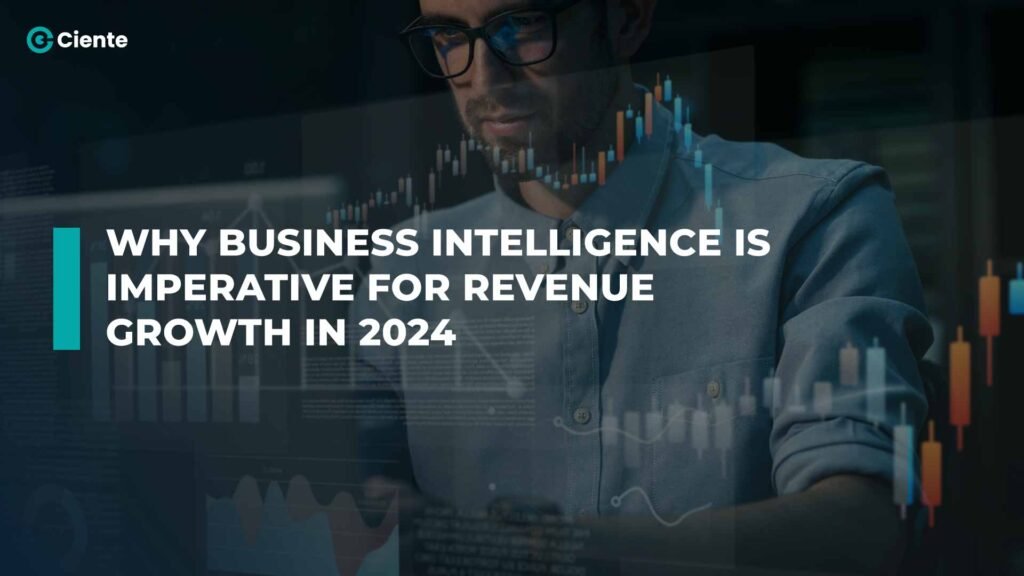The Business Intelligence market growth is a testament to its capabilities. How does it help enterprises make informed decisions?
In this digital age, there is an enormous amount of overflowing data. Enterprises find it intimidating to gather practical insights from an overwhelming amount of data without the help of technology. Businesses need orchestrated information to fine-tune business strategies that align with their goals. Business Intelligence drives this process of ingesting data from multiple sources and presenting everything in a customizable way to direct decision-makers strategies.
The global Business Intelligence market is projected to grow from USD 23.1 billion in 2020 to USD 33.3 billion by 2025 at a CAGR of 7.6%. This prediction is because of its offerings for various verticals like finance, Data Science, Marketing, Retail, FMCG, Media, Entertainment, and more. These numbers establish the pivotal role of BI in shaping the dynamic business landscape.
What is business intelligence?
Business Intelligence can be defined as a set of tools and strategies that a business must deploy to consume vast amounts of data and present those as actionable insights. It helps effortlessly analyze big data sets from multiple sources. Centralized data in the form of infographics, facilitates a seamless data inference. Harnessing the power of these tools helps enterprises navigate the complex tasks of data storage and mining to give a positive bottom-line impact.
For instance, the global streaming Entertainment platform Netflix, with its 247.2 million paid subscribers, uses recommendation algorithms based on a subscriber’s past watch history. It uses a combination of business analytics and intelligence and enriches user experience in keeping with the evolution of user-choices.
How does Business Intelligence drive long and short-term business goals?
Deploying a Business Intelligence suite can help an organization make data-driven choices in multiple ways listed below:
Creating better reports
A few years ago, enterprises had to rely simply on static quarterly, bi-annual, or annual reports to assess their business operations. With BI reporting, decision-makers have first-hand access to updated, real-time records and better infographics to curate a personalized report for accurate and meaningful insights. The real-time reports enable brands to alter their business strategies according to consumer preferences.
Making robust business decisions
BI tools help analyze vast data simply and effectively, propelling business owners to make rapid decisions. For example, with the capability of predictive analysis, BI helps the retail chain predict purchase behavior and curate customized offers to consumers to drive better sales.
Achieving enhanced ROI
The sales and marketing teams can brainstorm and create better campaigns with a crystal-clear view of the performance dashboard. Data-driven campaigns have the potential to gain better ROI, a collective goal of all the stakeholders.
Improving overall productivity and efficiency
Manual report generation is time-consuming and impacts productivity and efficiency. A centralized data suite and automated real-time reporting facility empower the vital members of an organization to effortlessly gather first-hand information.
Having Competitive Advantage
Gaining insights through only market research offers limited visibility into competitor strategies. BI helps get better competitor insights and peek into emerging trends for enterprises. By leveraging the power of BI, businesses can fine-tune their business decisions and enjoy a competitive advantage.
Leading Business Intelligence tools for your business to deploy in 2024
Enterprises must consider implementing some of the leading BI tools listed below in the upcoming year to gauge better KPIs and drive better sales.
Tableau
This thriving BI tool offers features like interactive and dynamic dashboards, easy integration capabilities with various platforms, an advanced data visualization facility, and various data connectors to connect with multiple data sources.
Sisense
Sisense offers a unified platform comprising data visualization, preparation, and modeling with the help of a single-stack architecture. It can also harness the power of AI through an easy integration process.
Microsoft Power BI
Power BI’s USP lies in its simplicity, enabling even novice users to harness its prowess. Being a Microsoft product, it offers a seamless integration with other Microsoft applications like Azure and Excel, that helps enterprises create better workflows.
Conclusion
In a fiercely competitive landscape with emerging trends, changing consumer choices, and massive data, enterprises must accomplish that one unwavering goal. To use data effectively and curate bespoke marketing strategies that would affirmatively work in their favor. By providing enhanced data visualization, interactive dashboards, the ability to ingest from various data sources, real-time reports, an enhanced ROI, productivity, and efficiency, the Business Intelligence suite gives an enterprise a competitive advantage. With advanced integration capabilities like AI integration, predictive analysis becomes simple. It helps organizations make informed decisions through data-driven strategies, the ultimate key to better revenue and growth. The BI market growth predictions further prove that investing in a BI tool aligned with the business’s long-term goals is imperative. Not investing in its offerings would keep businesses many steps behind their competitors. In 2024, every enterprise must embrace Business Intelligence to achieve unparalleled growth and resilience.



